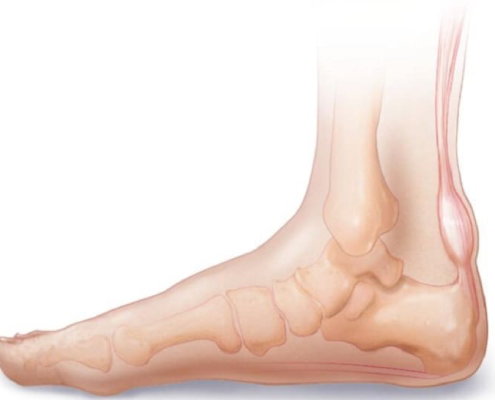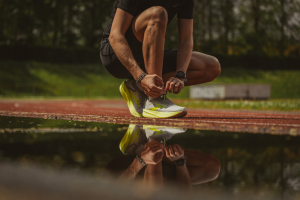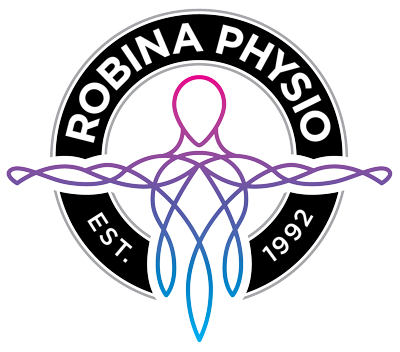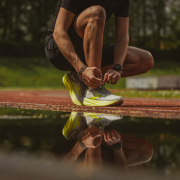Achilles Tendon Myths
Achilles Tendon Myths
By Aaron Woolley, Physiotherapist
The Achilles tendon serves as the robust link between the muscles of the calf and the foot. Symptoms of Achilles tendinopathy often include pain in the tendon, stiffness following periods of rest, and sensitivity to touch. This condition is typically a result of excessive strain on the tendon or sudden increases in physical activity. It is seen in 25% of professional athletes and affects approximately 15% of recreational runners. It’s no surprise that this issue is commonly encountered at Robina Physio on the Gold Coast. Despite its prevalence, there are many myths and misconceptions surrounding its causes, treatment, and management. This blog post aims to debunk some of the Achilles Tendon Myths and provide evidence-based information to help individuals better understand Achilles tendinopathy.
Myth 1: Only Athletes Get Achilles Tendinopathy
One of the most pervasive myths is that Achilles tendinopathy only affects athletes, particularly runners. While it’s true that athletes are at a higher risk due to repetitive strain and overuse, anyone can develop the condition. Many factors including poor footwear, excessive pronation, sudden increases in physical activity, and even certain medical conditions can contribute to the development of Achilles tendinopathy in non-athletes.
Myth 2: Complete Rest is the Best Treatment
This is probably the most widespread Achilles Tendon Myths around. Historically, complete rest was prescribed as the primary treatment for Achilles tendinopathy. However, recent evidence suggests that complete rest can actually hinder recovery. While it’s important to minimise activities that exacerbate the pain initially, gentle movement and specific exercises that promote tendon loading and healing are now recommended. Eccentric exercises, which involve lengthening the muscle while contracting it, have been shown to be particularly effective in treating Achilles tendinopathy.
Myth 3: Steroid Injections are a Quick Fix
Steroid injections are often thought of as a quick fix for pain relief in various musculoskeletal conditions, including Achilles tendinopathy. However, research indicates that steroid injections may weaken the tendon over time and increase the risk of tendon rupture. Therefore, this Achilles Tendon Myths has the potential to really set back progress and potentially worsen your tendons integrity. Instead, physiotherapy directed treatment like at Robina Physio on the Gold Coast, including exercises tailored to the individual’s condition and pain management techniques, is the preferred approach.
Myth 4: Surgery is Often Necessary
Surgery is sometimes considered a necessary step for those suffering from Achilles tendinopathy, especially when conservative treatments fail. While surgery can be an option for chronic, non-responsive cases, it’s often seen as a last resort. Many individuals with Achilles tendinopathy can achieve significant improvement or even full recovery with a well-designed physiotherapy program focused on strengthening and flexibility exercises. But bear in mind that an Achilles rupture is different beast and may require surgery more frequently.
Myth 5: Pain Equals Damage
The belief that pain is always indicative of damage is a common misconception. In the context of Achilles tendinopathy, pain does not necessarily correlate with the amount of tendon damage. It’s possible to have significant pain with minimal tissue damage and vice versa. This is why assessing and treating Achilles tendinopathy requires a comprehensive approach that considers pain levels, functional limitations, and individual goals rather than relying solely on imaging findings. When managing Achilles tendinopathy slight pain can sometimes be considered favourable.
Myth 6: All Pain Should be Avoided During Recovery
While it’s important to manage pain and avoid activities that cause significant discomfort, some level of pain is acceptable and even expected during the recovery process. A general guideline is the “24-hour rule,” where exercises that cause pain that returns to baseline within 24 hours are considered safe. This approach encourages gradual loading of the tendon, which is essential for healing.
Myth 7: Only High-Intensity Exercise Benefits Achilles Tendinopathy
While high-intensity exercise can be part of a rehabilitation program for Achilles tendinopathy, it’s not the only beneficial form of exercise. Low to moderate intensity exercises, particularly those focusing on tendon loading and stretching, play a crucial role in the recovery process. These exercises help improve tendon health and function without placing excessive stress on the tendon. The expert physiotherapists at Robina Physio on the Gold Coast can put together the highest quality loading program available to treat your Achilles pain incorporating these forms of loading.
Achilles Physio Gold Coast: Achilles Tendon Myths
Achilles tendinopathy can be a frustrating and debilitating condition, but understanding the facts can empower individuals to seek effective treatment and manage their recovery more effectively. By debunking these myths, we hope to provide a clearer path to recovery for those affected by Achilles tendinopathy.
Remember, a personalised approach to treatment, focusing on gradual progression and addressing individual needs, is key to successful management. If you suspect you have Achilles tendinopathy, consulting a physiotherapist or healthcare professional is the first step towards understanding and overcoming this condition.
At Robina Physio on the Gold Coast, we take a comprehensive approach that extends beyond merely diagnosing your injury and handing you a rehabilitation plan. After a thorough evaluation, our primary goal is to swiftly return you to your favourite sports and activities. Our rehabilitation strategy not only provides direct treatment to alleviate your pain, but also includes a comprehensive exercise regimen and a strategically developed plan for your return to running. Recognising the significance of load management, we continue our support by assisting in the planning of your training sessions, ensuring a safe and gradual increase in your running intensity.
I hope you found this article on Achilles Tendon Myths insightful. If your struggling with Achilles Pain and Tendinopathy visit our expert physiotherapists at Robina Physio on the Gold Coast and getting running pain free again. Don’t hesitate to Contact Us on (07) 5578 7233 or BOOK ONLINE.



